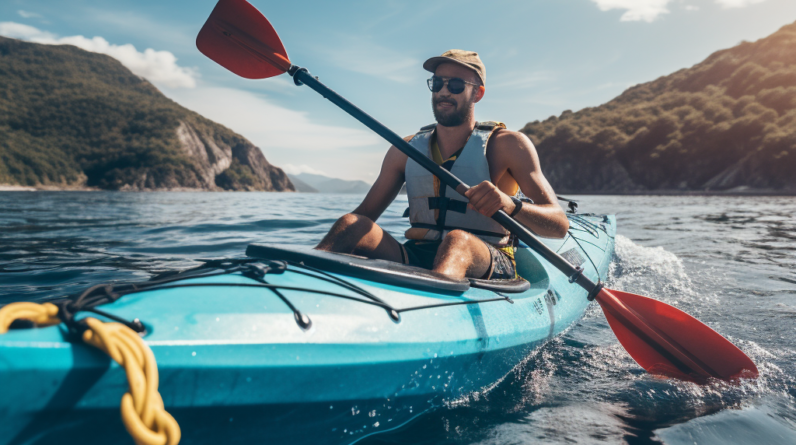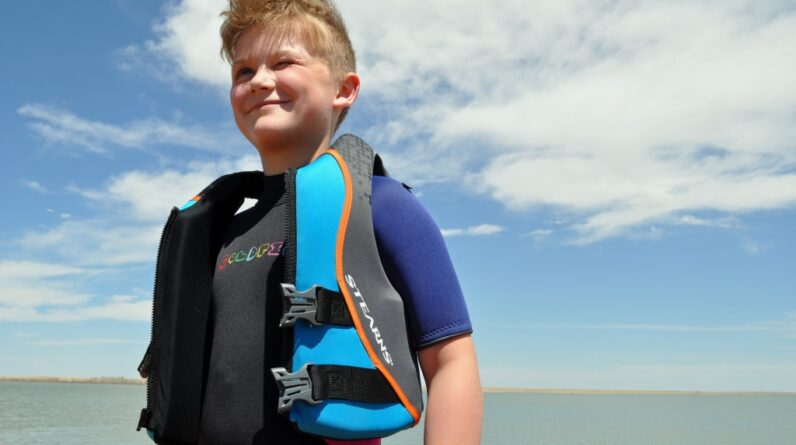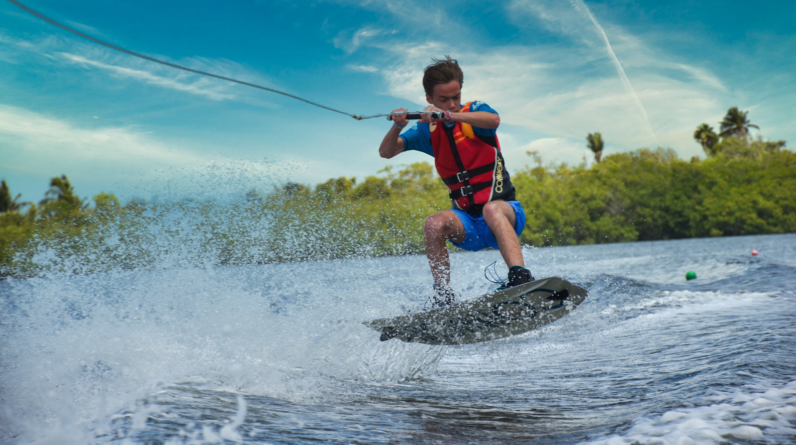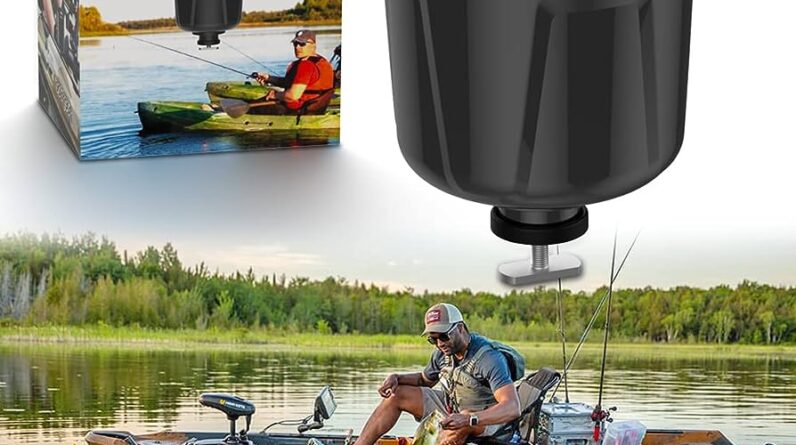
Are you ready to hit the water on your paddleboard and enjoy the thrill of gliding through the waves? Before you embark on your paddleboarding adventure in crowded areas, it’s important to prioritize safety. In this article, we will discuss some essential safety tips to keep in mind while paddleboarding in busy waters. By following these guidelines, you can ensure a fun and secure experience, avoiding any potential mishaps or accidents. So, grab your paddle and let’s dive into these safety tips for paddleboarding in crowded areas!
Choosing the Right Equipment
Paddleboarding is a wonderful activity that allows you to explore the waters and enjoy the serenity of the outdoors. However, before you embark on your paddleboarding adventure, it is crucial to ensure that you have the right equipment.
Selecting the Appropriate Paddleboard Size
One of the most important aspects of paddleboarding is selecting the appropriate paddleboard size. The size of your paddleboard will greatly impact your stability and maneuverability in the water. It is essential to choose a paddleboard that suits your body weight, skill level, and intended use. Typically, wider and longer paddleboards provide more stability, while narrower and shorter ones offer greater maneuverability. By selecting the right size, you can enhance your safety and overall experience while paddleboarding in crowded areas.
Using the Right Paddle
Equally important is choosing the right paddle for your paddleboarding expedition. The paddle serves as the main tool for propulsion and steering, so it is crucial to select one that suits your height and paddling style. A paddle that is too long or too short can affect your paddling efficiency and potentially cause strain or discomfort. Additionally, consider the material and weight of the paddle to ensure optimal performance and comfort during your paddleboarding session. Investing in a high-quality paddle that is suitable for your needs will enhance both your safety and enjoyment on the water.
Wearing a Personal Flotation Device (PFD)
When paddleboarding, it is strongly recommended to wear a personal flotation device (PFD) at all times, especially in crowded areas. A PFD, also known as a life jacket, is designed to provide buoyancy and keep you afloat in case of an accident or unexpected fall into the water. Even if you are a strong swimmer, wearing a PFD is crucial for your safety. PFDs come in various styles, including belt packs, inflatable vests, and traditional foam-filled jackets. Ensure that your PFD is certified and fits properly to maximize its effectiveness. Remember, your safety should always be a priority when paddleboarding.
Having a Leash Attached to Your Board
Another essential safety measure when paddleboarding is to have a leash attached to your board. A leash is a cord that tethers you to your paddleboard, preventing it from drifting away from you in case of a fall or strong currents. A leash ensures that you remain connected to your board at all times, making it easier to retrieve and regain control of your paddleboard. In crowded areas, where there might be other watercraft, having a leash is particularly important, as it helps prevent collisions and ensures the safety of both yourself and others. Make sure to choose a leash that is appropriate for the conditions you will be paddleboarding in and always wear it properly secured to your ankle or calf.
Preparing for Your Paddleboarding Session
Preparing adequately for your paddleboarding session is crucial to ensure a safe and enjoyable experience. By following these steps, you can set yourself up for a successful paddleboarding adventure.
Check the Weather Conditions
Before heading out to paddleboard in crowded areas, it is essential to check the weather conditions. Weather can greatly impact your safety on the water, and being aware of any potential changes or hazards is crucial. Pay close attention to wind speed, wave height, thunderstorm warnings, and any other relevant weather factors. If significant changes or unfavorable conditions are forecasted, it might be best to postpone your paddleboarding session to a more suitable time. Remember, it’s always better to be safe than sorry.
Know the Local Rules and Regulations
Familiarizing yourself with the local rules and regulations is essential when paddleboarding in crowded areas. Different water bodies may have specific guidelines and restrictions that must be followed to ensure everyone’s safety. Some areas might have designated zones for paddleboarding or specific speed limits to prevent accidents and conflicts between watercraft. Take the time to research or inquire about any applicable rules and regulations before venturing out. By abiding by these guidelines, you contribute to a harmonious and safe paddleboarding environment for all.
Plan Your Route in Advance
Carefully planning your route in advance is a vital safety measure when paddleboarding in crowded areas. By having a clear plan, you can avoid potential hazards, control your paddling distance, and ensure a more enjoyable experience. Consider factors such as water currents, boat traffic, potential points of interest, and any specific restrictions. Plotting your route on a map and familiarizing yourself with the area will enable you to navigate more confidently and reduce the risk of getting lost or encountering unexpected obstacles.
Inform Someone About Your Trip
Always remember to inform someone trustworthy about your paddleboarding trip when venturing into crowded areas. Sharing your plans with a friend, family member, or a fellow paddleboarder is an important safety precaution. Provide them with essential details, such as your intended route, estimated time of return, and any emergency contacts. This way, in the event of an unforeseen circumstance or if you fail to return as planned, someone will be aware of your situation and can take appropriate action to ensure your safety. Open and clear communication is key to maintaining a safe paddleboarding experience.

This image is property of www.glidesup.com.
Navigating Safely in Crowded Areas
When paddleboarding in crowded areas, it is essential to navigate safely, ensuring that you minimize risks and maintain a harmonious environment for everyone sharing the water. Follow these guidelines to navigate responsibly and with consideration for others.
Maintain Awareness of Your Surroundings
Maintaining awareness of your surroundings is crucial when paddleboarding in crowded areas. Constantly scan the water and be alert to the presence of other paddleboarders, boaters, swimmers, and any potential obstacles or hazards in the vicinity. By staying vigilant, you can react quickly and make informed decisions to avoid collisions and potential accidents. Remember, being proactive and aware of what’s happening around you is the key to a safe paddleboarding experience.
Avoid High-Traffic Areas
As a paddleboarder, it is advisable to avoid high-traffic areas whenever possible, especially in crowded locations. High-traffic areas, such as boat ramps or channels, can increase the risk of accidents due to the presence of larger vessels and faster-moving watercraft. Understanding the general flow of traffic in the area and avoiding congested zones will help you navigate more safely and reduce the chances of potential collisions or conflicts with other water users.
Give Way to Other Watercraft
When encountering other watercraft, whether motorized or non-motorized, always give way and yield to their right of way. This includes boats, kayaks, canoes, and other paddleboarders. By demonstrating courtesy and following proper navigation etiquette, you contribute to a safer and more pleasant experience for everyone. When in doubt, err on the side of caution and allow others to pass or maneuver first. Remember, sharing the waterway with others requires cooperation and mutual respect.
Use Signals or Communication Techniques
In crowded areas, clear communication is crucial to ensure everyone’s safety and prevent misunderstandings. Using signals or communication techniques, such as hand gestures, can help convey your intentions to other water users. Signaling your turns, stops, or changes in direction can help avoid collisions and facilitate smooth navigation. Familiarize yourself with common paddleboarding signals and gestures, and be sure to use them consistently to ensure effective communication with others on the water.
Ensuring Personal Safety
Prioritizing your personal safety is of utmost importance when engaging in paddleboarding. By taking certain precautions, you can minimize risks and enjoy your paddleboarding experience to the fullest extent.
Paying Attention to Your Physical Fitness
Paddleboarding can be physically demanding, so it is essential to pay attention to your physical fitness. Engaging in regular exercise and maintaining overall strength and flexibility will not only enhance your paddleboarding performance but also reduce the risk of injuries or fatigue. Incorporate activities that focus on core strength, balance, and cardiovascular endurance into your fitness routine. By being physically fit, you can paddleboard with confidence and minimize the chances of experiencing muscle strain or exhaustion during your session.
Applying Sunscreen and Wearing Protective Gear
When spending time outdoors, it is crucial to protect your skin from the harmful effects of the sun. Apply a broad-spectrum sunscreen with a high SPF before heading out for your paddleboarding session, even on cloudy days. Additionally, consider wearing protective clothing, such as a long-sleeved rash guard or a wide-brimmed hat, to shield yourself from the sun’s rays. Sunglasses with UV protection are also recommended to protect your eyes from glare and harmful UV radiation. Remember, protecting your skin and eyes from the sun is essential for your long-term health and well-being.
Hydrating Regularly
Staying hydrated is essential, especially when engaging in physical activities like paddleboarding. Dehydration can compromise your performance and lead to fatigue or heat-related illnesses. Before and during your paddleboarding session, ensure that you drink plenty of water and stay properly hydrated. Consider bringing a water bottle or hydration pack with you on your paddleboard, so you can easily access fluids when needed. Hydration plays a significant role in maintaining your energy levels and overall comfort while on the water.
Avoiding Hazardous Areas
To ensure your personal safety, it is important to avoid hazardous areas whenever possible. Hazardous areas may include rocky shores, strong currents, submerged obstacles, or areas with known wildlife encounters. Familiarize yourself with the local conditions and potential dangers before heading out, and plan your route accordingly to avoid any high-risk areas. Remember, prevention is key, and by steering clear of hazardous areas, you significantly reduce the chances of accidents or injuries during your paddleboarding session.
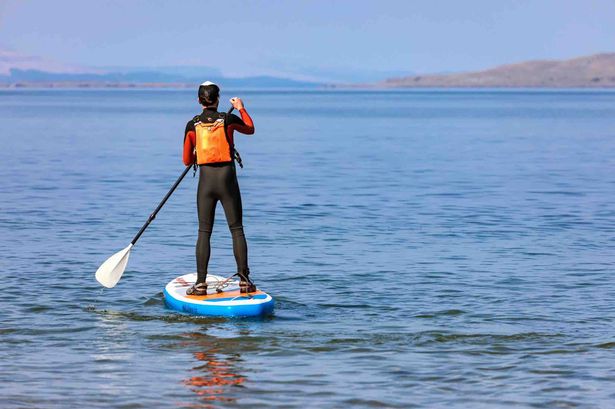
This image is property of i2-prod.glasgowlive.co.uk.
Improving Visibility and Communication
Enhancing your visibility and communication skills is crucial for maintaining safety and effectively interacting with other water users. By employing these strategies, you can ensure that you are seen and heard on the water.
Using Brightly Colored Clothing or Equipment
Using brightly colored clothing or equipment can greatly enhance your visibility on the water. Bright and neon-colored attire or accessories can help other water users spot you more easily, especially from a distance or in low-light conditions. Opt for paddleboarding gear with vibrant colors or reflective elements to increase your visibility and be easily distinguished from the surrounding environment. By making yourself more visible, you contribute to a safer paddleboarding experience for everyone involved.
Carrying a Whistle or Air Horn
Carrying a whistle or air horn when paddleboarding is a simple yet effective way to communicate and grab attention when needed. These signaling devices can be used to alert others in case of emergencies, imminent collisions, or any situation requiring attention. Familiarize yourself with the proper use of these devices and keep them easily accessible, such as on a lanyard around your neck or secured in a pocket. In the event of an emergency or when you need to attract attention, a whistle or air horn can be a valuable tool for ensuring your safety and the safety of others.
Slowing Down and Using Hand Signals
Slowing down your paddleboard and using hand signals are effective ways to communicate your intentions to others on the water. By signaling your turns, stops, or changes in direction with clear hand gestures, you provide visual cues to those around you. Slow and deliberate movements help convey your actions, giving others ample time to react and adjust their course accordingly. Consistently using hand signals, combined with maintaining situational awareness, promotes safe navigation and reduces the risk of collisions or misunderstandings.
Observing Right-of-Way Etiquette
Familiarizing yourself with right-of-way etiquette is essential when paddleboarding in crowded areas. Understanding who has the right of way in different situations helps prevent conflicts and ensures a smoother flow of traffic on the water. In general, paddleboarders should yield to larger vessels, such as motorized boats or sailboats, and should give way to other paddleboarders or non-motorized watercraft when overtaking or crossing paths. By observing the right-of-way etiquette, you contribute to a safer and more harmonious environment for all water users.
Dealing with Challenging Situations
Paddleboarding in crowded areas can present challenging situations that require quick thinking and appropriate actions. By being prepared and knowing how to react, you can navigate these scenarios with confidence and ensure your safety.
Reacting to Unexpected Obstacles
When confronted with unexpected obstacles on the water, it is important to react promptly and appropriately. This could include encountering floating debris, submerged rocks, or other hazards. If possible, attempt to navigate around or avoid the obstacle, using your paddle to steer yourself away. If navigating around is not feasible or safe, dismount from your paddleboard cautiously and safely, ensuring that you minimize the risk of injury to yourself or damage to your equipment. Always prioritize your safety and exercise caution when encountering unforeseen obstacles.
Managing Strong Currents or Waves
Strong currents or waves can present challenges, especially in crowded areas where there may be other watercraft sharing the water. When navigating through strong currents or waves, it is essential to maintain balance and agility on your paddleboard. Bend your knees slightly and distribute your weight evenly to improve stability. Use your paddle to provide additional support and help maintain your balance. If necessary, consider adjusting your route to avoid the most challenging sections or wait for the conditions to calm down before proceeding. Remember, your safety should always come first when dealing with strong currents or waves.
Avoiding Collisions with Swimmers or Divers
Collisions with swimmers or divers can pose significant risks and must be avoided at all costs. When paddleboarding in crowded areas, stay vigilant and maintain a safe distance from areas where people are swimming or diving. Always exercise caution when approaching areas designated for these activities and slow down or divert your course if necessary. Be mindful of your surroundings and remember that your paddleboard can be a potential hazard. By respecting the presence of swimmers and divers, you contribute to a safe and enjoyable environment for everyone involved.
Keeping Calm in Emergency Scenarios
In emergency scenarios, it is essential to remain calm and composed. Panic can cloud your judgment and hinder your ability to make sound decisions. If you find yourself in an emergency situation, such as strong currents, equipment failure, or sudden inclement weather, take a moment to assess the situation and prioritize your actions. Maintain clear communication with others if possible, and consider calling for assistance if needed. By staying calm and acting thoughtfully, you can navigate emergencies more effectively and ensure the safety of yourself and others.
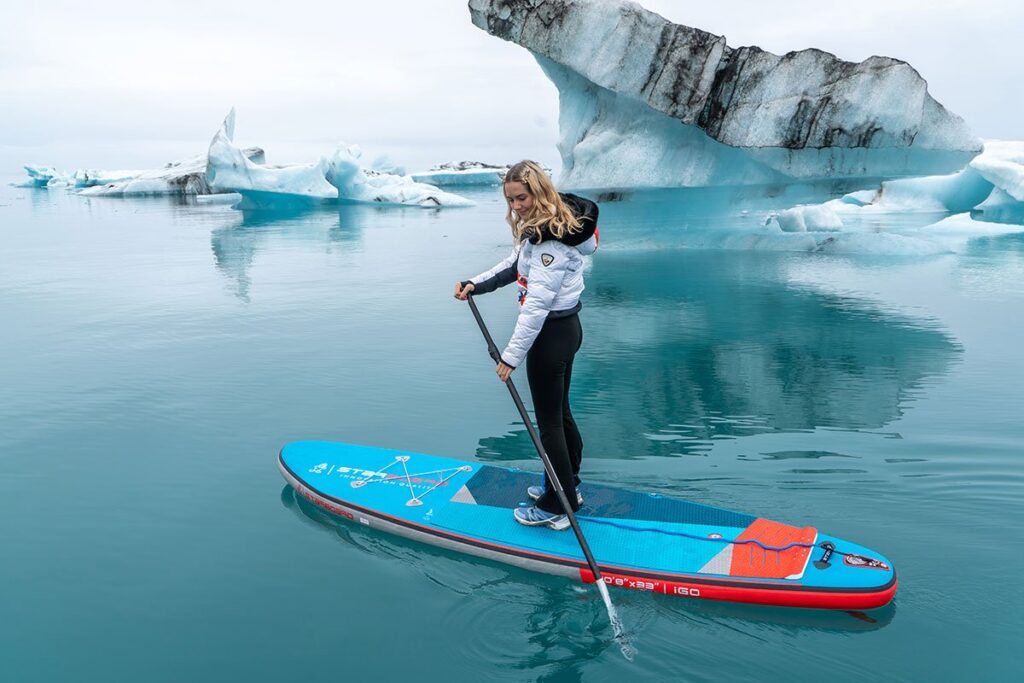
This image is property of greenwatersports.com.
Additional Safety Considerations
While the above sections cover crucial aspects of paddleboarding safety, there are additional factors to consider to maintain a safe and responsible approach to your paddleboarding adventures.
Using Buddy System
Using the buddy system is an excellent safety measure when paddleboarding, particularly in crowded areas. Having a partner or a group of fellow paddleboarders with you enhances safety by providing mutual support and assistance when needed. If possible, try to paddle with a buddy or in a group, as there is strength in numbers. In case of an emergency or unexpected situation, having someone by your side can greatly accelerate the response time and increase the chances of a successful outcome.
Being Cautious of Wildlife and Marine Life
When paddleboarding, it is important to be cautious and respectful of wildlife and marine life in the area. Avoid disturbing or approaching animals, and maintain a safe distance to minimize any potential risks or negative impacts. Some water bodies may have protected species, sensitive habitats, or local regulations pertaining to wildlife interactions, so be sure to familiarize yourself with any specific guidelines. By respecting the natural environment and its inhabitants, you contribute to the preservation of the ecosystem and ensure a safe and enjoyable experience for all.
Maintaining Proper Balance and Body Positioning
Maintaining proper balance and body positioning is essential for stability and safety while paddleboarding in crowded areas. Keep your feet shoulder-width apart on the board and distribute your weight evenly. Engage your core muscles to maintain stability and avoid putting excessive pressure on one side of the board. When paddling, use your entire body to generate power, rather than relying solely on your arms. By adopting the correct posture and paying attention to your balance, you can minimize the risk of falling or losing control of your paddleboard.
Avoiding Distractions
While paddleboarding in crowded areas, it is important to avoid distractions that may compromise your safety. Distractions can range from using electronic devices to engaging in conversations with other paddleboarders or onlookers. Stay focused on your surroundings and maintain situational awareness at all times. By giving your full attention to your paddleboarding activity, you can react promptly to any potential risks or hazards that may arise.
Taking Care of the Environment
Paddleboarding provides an opportunity to connect with nature and enjoy the beauty of the water. It is essential to take care of the environment and minimize your impact to preserve these natural resources for future generations.
Respecting Marine Life and Habitats
Respecting marine life and habitats is crucial when paddleboarding. Avoid disturbing or touching marine creatures and refrain from causing any damage to their habitats, such as coral reefs or seagrass beds. Be extra cautious when navigating shallow areas to prevent unintentional harm to underwater ecosystems. By being mindful of your actions, you contribute to the conservation and protection of the delicate balance of marine life.
Properly Disposing of Waste
Properly disposing of waste is a responsibility that all paddleboarders should uphold. Never throw any trash or litter into the water, as it can harm the wildlife and pollute the environment. Always carry a waterproof bag or container to store any garbage you accumulate during your paddleboarding session and dispose of it properly once you are back on land. Consider participating in local cleanup efforts or joining organizations dedicated to preserving the environment. By practicing proper waste management, you contribute to the cleanliness and sustainability of our waterways.
Minimizing Noise Pollution
Minimizing noise pollution is crucial for maintaining a peaceful and enjoyable environment for everyone on the water. Avoid excessive noise, such as loud conversations, music, or unnecessary disturbances. Be mindful of how your actions and equipment might impact the tranquility of the surroundings. By paddling calmly and quietly, you not only enhance your own experience but also contribute to the overall enjoyment and well-being of others in the area.
Following Leave No Trace Principles
Adhering to the Leave No Trace principles is a fundamental approach to paddleboarding responsibly. These principles emphasize minimizing our impact on the environment and preserving the natural beauty of the outdoors. Respect wildlife, stay on designated paths, camp only in designated areas, and minimize campfire impacts. By following these guidelines, you can actively participate in creating a sustainable and healthy environment for future paddleboarders and outdoor enthusiasts.
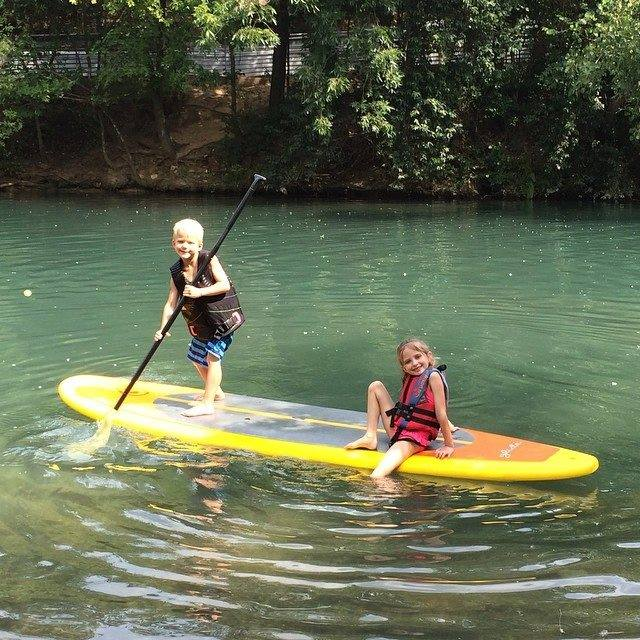
This image is property of images.surferseo.art.
Practicing Etiquette and Politeness
Practicing etiquette and politeness is essential for promoting a positive and friendly atmosphere when paddleboarding in crowded areas. By following these simple guidelines, you contribute to a harmonious and enjoyable environment for all.
Being Respectful of Other Paddleboarders
Respect for other paddleboarders is the foundation of a safe and enjoyable paddleboarding experience. Avoid crowding or interfering with other paddleboarders, giving them enough space to maneuver and enjoy their time on the water. Be mindful of your speed and avoid excessive splashing or waves that might impact others’ stability. Treat fellow paddlers with kindness and courtesy, and always be willing to extend a helping hand when needed.
Observing Paddleboarding Etiquette
Observing paddleboarding etiquette ensures a positive and considerate experience for everyone involved. This includes yielding to faster or less maneuverable paddleboards, avoiding sudden stops or turns that may catch others off guard, and staying clear of popular spots reserved for training, races, or other organized events. Familiarize yourself with the specific etiquette of the area you will be paddleboarding in and adhere to the established norms. By practicing good paddleboarding etiquette, you contribute to a pleasant and respectful environment for all paddleboarders.
Avoiding Overcrowding Popular Spots
Popular paddleboarding spots can sometimes become crowded, especially during peak hours or weekends. To enhance safety and prevent overcrowding, consider exploring nearby locations or less frequented areas. This not only allows for a more serene and intimate paddleboarding experience but also disperses the crowd, reducing the risk of accidents or conflicts. By diversifying your paddleboarding destinations, you can discover new places and ensure a more relaxed and enjoyable outing.
Adhering to Local Customs and Traditions
When paddleboarding in different locations, it is important to respect and adhere to local customs and traditions. Some areas may have specific cultural practices or etiquette that should be followed to ensure a positive interaction with the local community. Familiarize yourself with any cultural sensitivities, such as appropriate dress codes or behavior, and act accordingly. By embracing local customs and traditions, you demonstrate cultural respect and build positive relationships within the communities you visit.
Enhancing Your Skills and Knowledge
Continuously improving your skills and knowledge is essential for becoming a proficient and confident paddleboarder. By investing in your development, you can navigate crowded areas with ease and enhance your overall paddleboarding experience.
Taking Paddleboarding Lessons or Courses
Taking paddleboarding lessons or courses is an excellent way to develop essential skills and learn best practices for paddleboarding in crowded areas. Certified instructors can provide valuable guidance on paddleboarding techniques, safety measures, and navigation strategies. Whether you are a beginner or an experienced paddleboarder, lessons or courses can help refine your skills and broaden your knowledge base. By investing in education, you gain the tools and confidence necessary for a safe and enjoyable paddleboarding adventure.
Practicing Basic Paddleboarding Techniques
Practicing basic paddleboarding techniques regularly is vital for building muscle memory and refining your skills. Focus on mastering the foundational skills, such as proper paddling technique, balance, and turning. Set aside dedicated practice time to strengthen your abilities and become more comfortable on your paddleboard. By mastering the basics, you can navigate crowded areas with greater ease and agility, ensuring your safety and the safety of others.
Improving Your Water Navigation Skills
Enhancing your water navigation skills is essential for paddleboarding in crowded areas. Understanding how to read currents, tides, and water conditions can help you make informed decisions and choose the safest routes. Take the time to study navigational charts, learn about local water patterns, and familiarize yourself with any potential hazards or areas of concern. By improving your water navigation skills, you can navigate crowded areas with confidence and ensure a safer and more efficient paddleboarding experience.
Staying Updated with Safety Guidelines
Staying updated with safety guidelines and regulations is crucial for maintaining a safe paddleboarding experience. Safety guidelines and regulations can change over time, so make sure to stay informed and regularly check for any updates. Follow relevant associations, organizations, or governmental agencies that provide up-to-date information on paddleboarding safety. By staying informed, you can keep your knowledge and practices aligned with the best safety standards, ensuring a smooth and enjoyable paddleboarding journey.
In conclusion, paddleboarding in crowded areas can be a rewarding and exhilarating experience. By choosing the right equipment, preparing adequately, navigating safely, ensuring personal safety, enhancing visibility and communication, and being considerate of the environment and others, you can enjoy paddleboarding to its fullest while minimizing risks and promoting a positive atmosphere. Always prioritize your safety and the safety of others, and remember that practicing good etiquette and continuously improving your skills are key to becoming a responsible and proficient paddleboarder. Stay informed, stay respectful, and enjoy your paddleboarding adventures safely!
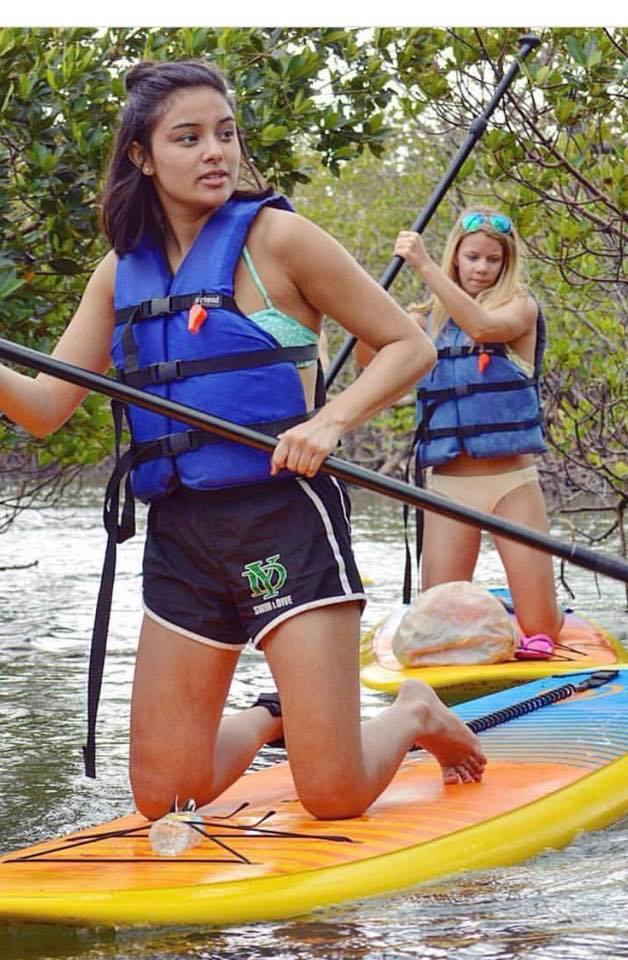
This image is property of images.surferseo.art.

